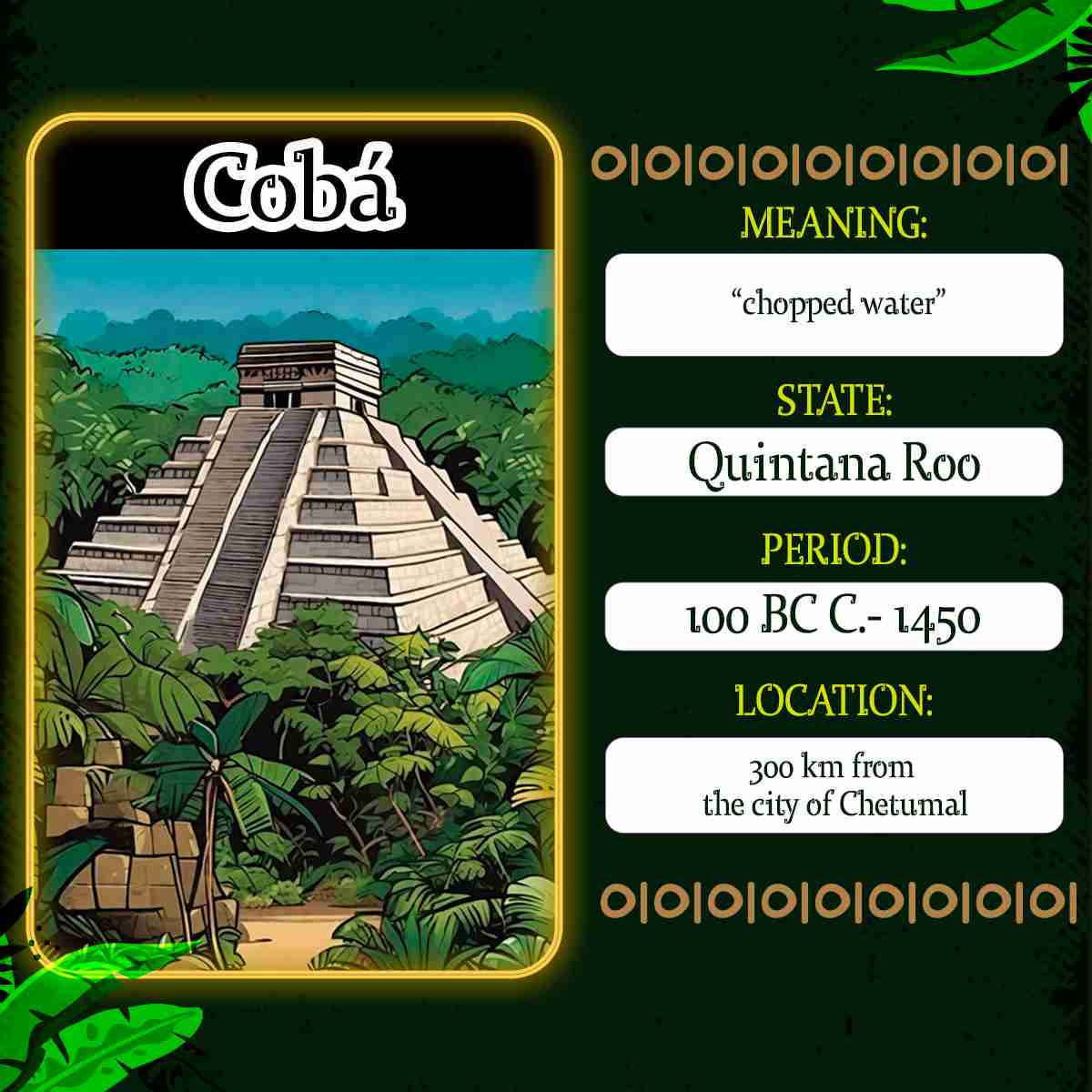Cobá emerges as one of the most important Mayan cities in the northern lowlands.
Surrounded by five lagoons, this city came to dominate an extensive territory.
And its 50 elevated roads, known as sacbé ("white roads" in the Mayan language), connected ceremonial, administrative and housing complexes. These avenues not only facilitated control over other groups, but also fostered interaction between various entities, boosting trade and proximity.
Two of these roads extended to more distant places, such as Ixil, 20 kilometers away, and Yaxuná, 100 kilometers away.
The city of Cobá is one of the few pre-Hispanic settlements that has preserved its original name, as reflected by the inscriptions carved on its monuments.
Its origin dates back to small villages dedicated to agriculture and hunting as a means of subsistence, during a period spanning from the 1st century BC. until II AD From that moment on, it experienced economic development, an improvement in political organization and a centralization of power, marking the beginning of an extensive process of consolidation of the city.
Did you know…?
Only 5% of the site has been excavated, so there would be around 6,500 structures in the area that today has been surrounded by a lush, thick jungle.

